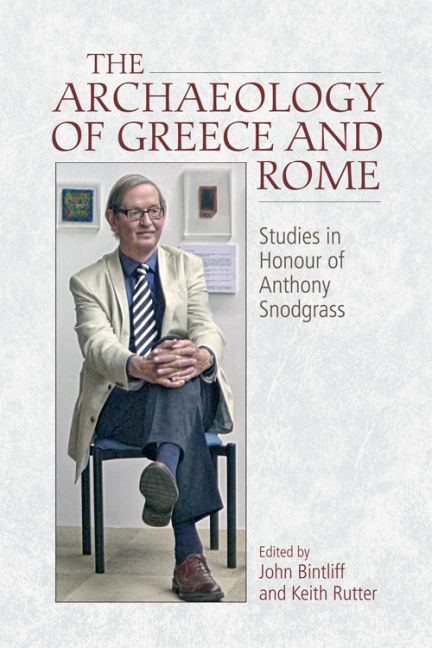Book contents
- Frontmatter
- Contents
- Preface
- List of Contributors
- List of Abbreviations
- Section I Prehistory
- Section II Around Homer
- Section III The Archaic and Classical Greek World
- 7 Potters, Hippeis and Gods at Penteskouphia (Corinth), Seventh to Sixth Centuries bc
- 8 Space, Society, Religion: A Short Retrospective and Prospective Note
- 9 Modelling the Territories of Attic Demes: A Computational Approach
- 10 Hesiod and the Disgraceful Shepherds: Pastoral Politics in a Panhellenic Dichterweihe?
- 11 ‘Is Painting a Representation of Visible Things?’ Conceptual Reality in Greek Art: A Preliminary Sketch
- 12 Coins in a ‘Home Away from Home’: The Case of Sicily
- Section IV The Greeks and their Neighbours
- Section V The Roman and Much Wider World
- Section VI The Scholar in the University and in the Field: Personal Histories
- Index
8 - Space, Society, Religion: A Short Retrospective and Prospective Note
from Section III The Archaic and Classical Greek World
Published online by Cambridge University Press: 26 May 2017
- Frontmatter
- Contents
- Preface
- List of Contributors
- List of Abbreviations
- Section I Prehistory
- Section II Around Homer
- Section III The Archaic and Classical Greek World
- 7 Potters, Hippeis and Gods at Penteskouphia (Corinth), Seventh to Sixth Centuries bc
- 8 Space, Society, Religion: A Short Retrospective and Prospective Note
- 9 Modelling the Territories of Attic Demes: A Computational Approach
- 10 Hesiod and the Disgraceful Shepherds: Pastoral Politics in a Panhellenic Dichterweihe?
- 11 ‘Is Painting a Representation of Visible Things?’ Conceptual Reality in Greek Art: A Preliminary Sketch
- 12 Coins in a ‘Home Away from Home’: The Case of Sicily
- Section IV The Greeks and their Neighbours
- Section V The Roman and Much Wider World
- Section VI The Scholar in the University and in the Field: Personal Histories
- Index
Summary
It is now a well-established fact in the human and social sciences that the study of the spatial distribution of social life, including religion, is one of the best accesses to the analysis and understanding of societies. But it has not always been so. For quite a long time, in Classical studies, the only approach to space was traditional ‘historical geography’, the scope of which was primarily to identify the places mentioned in the ancient sources or known through archaeological or epigraphic evidence. This was and remains an important contribution to the study of ancient societies. But in these works the study of topography does not sustain a general conception of space as such and as a fundamental aspect of social life; and in fact, space as a category of study was not formalised as such. In the field of religion, of special interest here, the study of cult and deities in the ancient classical world (Greece and Rome) has for long been unaware of the interest of spatial relationships. The location of sanctuaries in Classical antiquity was usually analysed in purely religious terms, according to the nature of the deity or peculiarities of the cult, for example, and perceived as a static reality, unaffected by historical change (political and/or social). The idea has been deeply rooted for quite a long time that the choice of cult places depended frequently on their supposed ‘natural features’, which would ‘naturally’ confer on them a sacred value (mountains, caves, woods, springs, etc.). According to this view (which has not completely disappeared), most religious behaviours were seen as deeply traditional and static. This is why it is interesting to note that, apart from sharing a strong fascination with the intriguing world of Geometric and Archaic Greece, Anthony Snodgrass and his students or the researchers whom he deeply influenced (including myself in this last category) played a decisive part in the ‘spatial turn’ of the 1970s and 1980s, and made of space a decisive concept in many different fields. May one speak of a ‘Cambridge school’ of archaeology? I would be inclined to do so. And I would like to make here a short and very general retrospective evocation of the research in this field before asking a few questions about the present situation.
- Type
- Chapter
- Information
- The Archaeology of Greece and RomeStudies In Honour of Anthony Snodgrass, pp. 183 - 191Publisher: Edinburgh University PressPrint publication year: 2016

